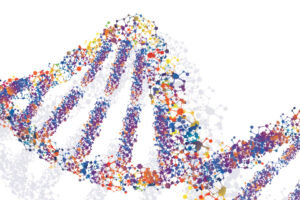Thousands of women each year are found, during routine screening mammograms, to have breast calcifications, which are calcium deposits within the breast tissue.
While these calcifications are usually harmless, they can, in some cases, indicate breast cancer or precancerous conditions of the breast. In the past, the only way to know for sure was to perform a breast biopsy — which can be an uncomfortable and unnerving procedure for women.
Now, CentraState Medical Center and Princeton Radiology (formerly Freehold Radiology) are pioneering the use of breast ultrasound concurrently with mammography to evaluate calcifications. Our hope is this new approach will eliminate the need for a biopsy for some women and provide a less invasive alternative when a biopsy is necessary.
Our ultimate goal is to provide less aggressive testing that is just as effective at diagnosing or ruling out breast cancer.
A Common Condition
There are two types of breast calcifications:
- Macrocalcifications, which are larger calcium deposits that are usually caused by aging and are not a concern for breast cancer. They are found in about half of women over the age of 50, according to the American Cancer Society.
- Microcalcifications, which are tiny specks of calcium. While they are also usually benign, they are more of a concern for cancer, depending on the pattern in which they appear in the breast on a mammogram.
When calcifications are found to be concerning, the next step has traditionally been a biopsy procedure called stereotactic breast biopsy. During this procedure, the patient lies face down on a table with the breast positioned in an opening in the table. The breast is compressed and a small incision is made. Under mammography (X-ray) guidance, a biopsy sample is removed with a needle.
Stereotactic breast biopsy, which takes about an hour, is an effective diagnostic procedure — but certainly one that women would prefer to avoid if at all possible.
A New Approach
At CentraState Medical Center, we’ve started offering patients the opportunity to further investigate questionable breast calcifications using breast ultrasound as a next step. We are able to communicate with the referring physician and discuss these benefits while the patient is still in our facility. Ultrasound can identify potentially cancerous masses associated with breast calcifications, including masses that can’t be seen on a mammogram. This approach provides several advantages.
- If no mass is found using ultrasound, we can often take a wait-and-see approach and have the patient return for a follow-up mammogram in six months rather than going right in for a breast biopsy.
- If a mass is found using ultrasound, we can later perform the biopsy with ultrasound guidance as well. Ultrasound, which uses sound waves to produce images, is perhaps the least invasive medical imaging technology. An ultrasound breast biopsy can be performed in about five minutes with the patient lying comfortably on her back.
- A traditional stereotactic biopsy can still be performed, if necessary. Ultrasound is an additional tool in our toolbox of cancer diagnostics — it does not eliminate any other options.
So far, we’ve found that ultrasound has been just as effective at diagnosing or ruling out breast cancer for women with calcifications.
We are further examining whether these outcomes hold true for a larger population of women. We offer all women the absolute best national standard of care, and we believe that breast ultrasound is another route to the same destination — a definitive diagnosis.
Our hope is that if breast ultrasound is found to be as effective as we suspect, it will eventually become the new standard of care — giving more and more women a less invasive option for analyzing breast calcifications.
Comprehensive cancer prevention and treatment
The Star and Barry Tobias Women’s Health Center at CentraState offers breast health wellness, diagnostic, treatment and counseling services. In addition to mammography, the center also offers stereotactic needle biopsy, breast needle localization, breast ultrasound and bone densitometry. For more information, call (732) 294-2626 or visit centrastate.com/mammogram.
The Statesir Cancer Center at CentraState delivers comprehensive treatment and support services to help patients and families. To learn more, call (855) 411-CANCER.
Dr. Peter Mezzacappa is a board-certified radiologist, president of Freehold Radiology Group and chairman of the Department of Radiology at CentraState Medical Center. Dr. Mezzacappa can be reached by calling 866-CENTRA7.
 Dr. Peter Mezzacappa is a board-certified radiologist, president of Princeton Radiology (formerly Freehold Radiology Group) and chairman of the Department of Radiology at CentraState Medical Center. Dr. Mezzacappa can be reached by calling 866-CENTRA7.
Dr. Peter Mezzacappa is a board-certified radiologist, president of Princeton Radiology (formerly Freehold Radiology Group) and chairman of the Department of Radiology at CentraState Medical Center. Dr. Mezzacappa can be reached by calling 866-CENTRA7.





